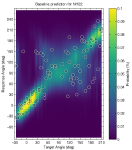

Fig.2: Example of the model performance.
Fig.1: Structure of the sagittal-plane localization model. For details see Baumgartner et al. (2014).
Context: Sound localization refers to the ability of a listener to determine the position of a detected sound source in the space. It is an important task of the human auditory system as it allows, for instance, to detect moving objects and thereby prevent collisions. Although the process of sound localization is not fully understood yet, it is possible to simulate sounds in the 3-D space via headphones by using head-related transfer functions (HRTFs). HRTFs describe the filtering of incoming sounds by the head, torso, and particularly the pinna. HRTFs depend on the listener's morphology and, therefore, are individual. The long-term goal of of the project "LocaPhoto" is to achieve a functional localization model that is able to predict human localization performance for sound sources positioned in the 3-D space. As a first step, the current work focuses on a model of sound localization in sagittal planes. In particular, available experimental data show that the sagittal range of perceived sound direction depends on the sensation level (SL, defined as the level above the hearing threshold at a certain frequency, in dB) of the sound source, for short sounds at least. This effect of level on localization performance is often described by the polar gain (linear fit between target and response angles). Still, data on the polar gain for setups involving both frontal and rear targets seem to be rather limited. Furthermore, models considering the level-dependency are available only as a conceptual description.
Method: Psychophysical measurements of sagittal-plane localization performance were collected under various conditions. Specifically, we investigated the polar gain effect. Localization responses to 3-ms noise bursts, distributed around normal-hearing listeners both horizontally and vertically in the upper hemisphere, were collected at various SLs from 5 to 75 dB in a virtual binaural environment using listener-specific HRTFs. Localization performance was evaluated in terms of quadrant errors (i.e., hemifield confusions), polar angle errors (i.e., local root-mean-square errors in the sagittal planes), and polar gain. Four normal-hearing listeners participated in the experiment. A modeling attempt is made.
Results: The quadrant and polar errors were lowest at an SL of 40 dB and increased at other SLs, which confirms the level dependence of localization performance in sagittal planes. However, the goodness of fit of the polar gain was overall low, which suggests that the polar gain does not well describe the effect of SL. In an attempt to predict the psychophysical data, we propose a new modeling approach based on the comparison of internal sound representation with a template. The model incorporates a (nonlinear) peripheral processing stage, a decision stage based on Bayesian statistics, and a stage retrieving psychophysical performance parameters such as front-back confusion rate, localization blur, and bias. Two template-level conditions were tested: varying with the SL and fixed to 40 dB. The results were accurately predicted by the model with a template level fixed to 40 dB and inaccurately predicted by the model with varying template level. This suggests that the spectro-to-spatial mapping is tuned to a fixed level at the neural level. Work towards the development of a model able to predict localization performance in the 3-D space is ongoing.
My contribution: Partly involved in the experimental design and modeling of the data.
Potential applications: psychoacoustic models of hearing, sound design & virtual reality systems.
Related publications:
R. Baumgartner, P. Majdak, & B. Laback. Modeling sound-source localization in sagittal planes for human listeners. The Journal of the Acoustical Society of America, 136(2):791--802, August 2014. DOI.
R. Baumgartner, P. Majdak, & B. Laback. Assessment of sagittal-plane sound localization performance in spatial-audio applications. Chapter 4 in The Technology of Binaural Listening, edited by Blauert, J., Springer Berlin Heidelberg, pages 93--119, 2013. DOI:
P. Majdak, R. Baumgartner, T. Necciari, & B. Laback. Sound Localization in Sagittal Planes: Modeling the Level Dependence. Presented at the 36th MidWinter Meeting of the ARO, Baltimore, MD, USA, February 2013.
P. Majdak, B. Laback, T. Necciari, K. Egger, & R. Baumgartner. Modeling sound-localization performance in vertical planes: Level dependence. Presented at the 16th International Symposium on Hearing, Cambridge, UK, July 2012.
Sound localization model
Illustrations



Post-Doctoral Researcher in Audio Signal Processing & Psychoacoustics
Thibaud Necciari, PhD

Thibaud Necciari's personal Website, 2016-2018

orcid.org/0000-0003-2574-0948 | ResearcherID